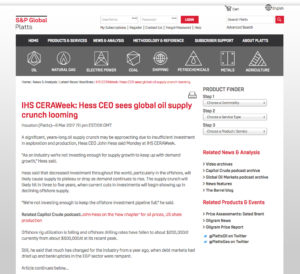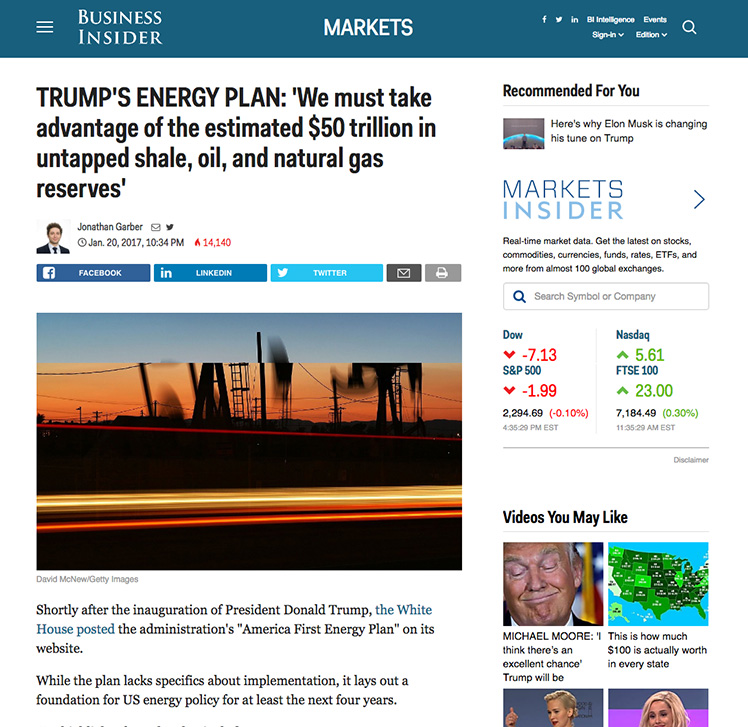Hess CEO Sees Global Oil Supply Crunch Looming 03/06/17 •lweb.es/f2714 •bit.ly/2okjF1o
 A significant, years-long oil supply crunch may be approaching due to insufficient investment in exploration and production, Hess CEO John Hess said at the IHS CERAWeek, and this will begin showing up in declining offshore supply. He added that “The shale business is back in business and starting to grow again,” but such growth in US shale would not be enough to meet global oil demand, which the International Energy Agency has projected to grow between 1.4-1.6 million barrels a day over this year and the next.
A significant, years-long oil supply crunch may be approaching due to insufficient investment in exploration and production, Hess CEO John Hess said at the IHS CERAWeek, and this will begin showing up in declining offshore supply. He added that “The shale business is back in business and starting to grow again,” but such growth in US shale would not be enough to meet global oil demand, which the International Energy Agency has projected to grow between 1.4-1.6 million barrels a day over this year and the next.


